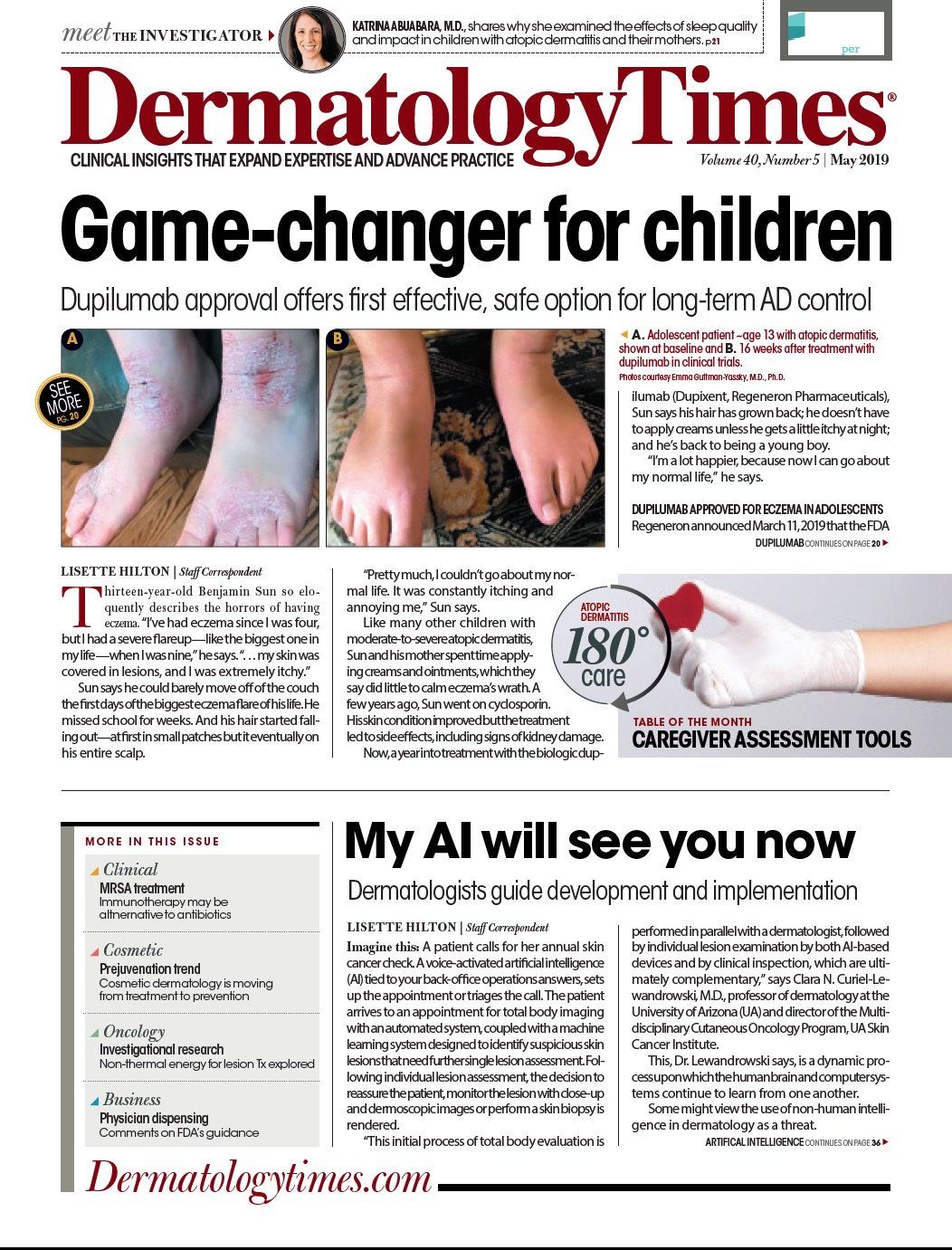- Case-Based Roundtable
- General Dermatology
- Eczema
- Chronic Hand Eczema
- Alopecia
- Aesthetics
- Vitiligo
- COVID-19
- Actinic Keratosis
- Precision Medicine and Biologics
- Rare Disease
- Wound Care
- Rosacea
- Psoriasis
- Psoriatic Arthritis
- Atopic Dermatitis
- Melasma
- NP and PA
- Skin Cancer
- Hidradenitis Suppurativa
- Drug Watch
- Pigmentary Disorders
- Acne
- Pediatric Dermatology
- Practice Management
- Prurigo Nodularis
- Buy-and-Bill
Publication
Article
Dermatology Times
My new insight on eczema
Author(s):
Have you ever found yourself on the other side of the stethoscope? That’s what happened when Dr. Wheeland awoke one day with an asymptomatic, solitary, round, scaly patch on his ankle. Read how this experience inspired him to take a second look at how he treats patients with eczema.
I’ve had a number of different interests and responsibilities during my dermatologic career, but it all began with treating general dermatology patients suffering from eczema, psoriasis, acne and warts. Following a fellowship in dermatopathology, I added pathology to my armamentarium of skills and interests. After another fellowship in Mohs, laser and cosmetic surgery, surgical procedures were added to my growing list of skills. Next, came clinical and basic research, academic medical administration and, finally, organizational dermatology. However, I found it somewhat surprising that I always returned to my roots of general dermatology. For, at every turn and junction, I saw patients with various general dermatologic skin diseases that required care. In all honesty, eczema was not my most favorite skin condition to treat. It was too difficult to determine causation in many cases and proved very difficult to treat. I found myself repeating daily to one or more patients what some of my trainees called my “eczema lecture.” However, despite those facts, I honestly believed until recently that I had offered those patients competent and compassionate care.
My new “insight” on eczema began one day when I awoke with an asymptomatic, solitary, round, scaly patch on my ankle. Even though I am an atopic, manifest by allergic rhinitis, except for some minor dryness during the winter, this was my first skin problem of any kind. After first ruling out a possible tinea infection with a simple negative KOH exam, I next went through a list of possible contactants to which I might have been exposed that could have been responsible. However, finding none, I decided to just “keep an eye on it.” This same advice I had given previously dozens of times to my eczema patients in the past. But this time was different as it made me start questioning just how competent and caring my treatment of eczema patients had been in the past.
A few days later my solitary patch had been joined by a dozen others on my hands, antecubital fossae, legs and neck. The main difference with these new ones was that they were intensely pruritic. Despite how hard one tries, let me tell you that it is virtually impossible to stop scratching unless you are unconscious! This was my first of several new insights on eczema I had when dealing with my own “rash.” I can’t tell you how many times I heard the words to “STOP SCRATCHING!” from my loving wife. But unless you’ve walked a mile in my eczematous-laden shoes, you can’t know how hard it is to “NOT SCRATCH!” I’ve found myself in a checkout line or quietly listening to music and discovered one hand on the back of my neck subconsciously scratching away like a man possessed, completely unaware I was doing so. I remember that one of my faculty members when I was a resident made the comment that the uncontrollable scratching of a person with eczema was like a “cutaneous orgasm!” I can’t comment on the orgasmic part, but I can honestly say that it is truly impossible to stop.
So, finally, I came to my senses and did the right thing by taking my uncontrollably pruritic body to see my dermatologist where I got the definitive answer: “It’s just eczema.” After receiving the much-needed reassurance that my “rash” was not caused by an allergic reaction to food or chemicals and not due to some lurking internal malignancy or disease, I was told to apply emollients after a cool bath and steroid cream to the most pruritic areas twice daily. I was not told to “Stop scratching!” for he knew that was not within my power.
As expected, following a vigorous, multi-pronged attack using this combination of modalities, I started to improve and, slowly, I have become almost completely clear with only a rare bout of pruritus. This was the impetus of my thinking about the quality of care I provided as a dermatologist to my patients in the past with problems similar to mine.
Looking back now after having suffered with this dread disease, I’m sure that many times I did not show a proper level of concern about my patients’ problems. Nor did I likely answer all the questions that were going through their minds like those I had myself recently, such as: What caused this to come on? Is it related to some contact allergy? Do internal diseases play any role in its development? Why did it wait until now, at 71 years of age, to develop? What can I anticipate happening in the future?
My own personal battle with this whole problem has given me a new level of appreciation and respect for the complexity of eczema and how profoundly incapacitating it can be. I know I will be more understanding and caring the next time I see a patient with eczema than I was in the past, and I strongly urge those of you reading this to evaluate the quality your own past treatment of eczema patients, you might be surprised as to what you discover.







